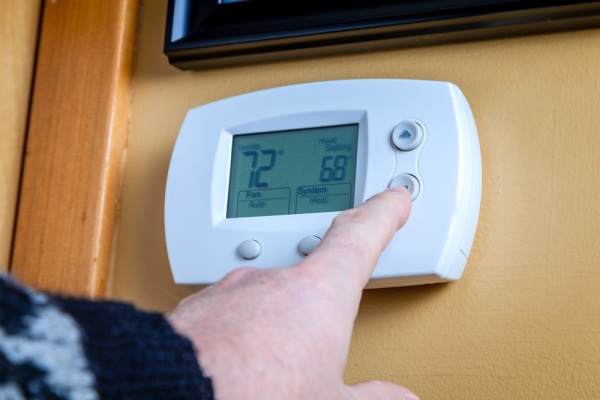
Table of contents
- 1. Your HVAC Unit Keeps Turning Off and On but Not Long Enough to Have an Effect
- 2. The Thermostat Is Reading the Temperature in the Home Wrong
- 3. Your Energy Bills Are High
- 4. Constant Temperature Shifts
- 5. Your Thermostat is Failing to Respond to Change Settings
- Not Sure If It Is Your HVAC Unit or Your Thermostat?
An HVAC unit is a must-have in Lewisville, Texas. From the intense heat of the summer sun to the chilly winters, your HVAC needs to be able to react quickly enough to keep your home comfortable. HVAC units rely on the thermostat to tell them when the temperature in your home is falling below or going over the preferred temperature that you set. If your HVAC unit isn’t responding to the changing temperatures in your home, it may not be the unit itself that is the problem. The culprit could be a faulty thermostat.
Here are some signs that may indicate that your thermostat needs to be replaced:
1. Your HVAC Unit Keeps Turning Off and On but Not Long Enough to Have an Effect
Your thermostat is the communication center between your needs and your HVAC unit. Over time, a thermostat can become damaged from old age. The faulty wiring of an old thermostat can send mixed signals to your HVAC unit. This can cause it to constantly turn on when not-needed or turn off when it needs to be on.
2. The Thermostat Is Reading the Temperature in the Home Wrong
All thermostats have sensors to test the temperature of your air and then report to the HVAC system. When your thermostat begins to read the temperatures in your home incorrectly, this can lead to your HVAC unit not responding properly.
There is a quick test you can do to see if your thermostat is getting the correct reading or not. First, take a portable indoor thermometer. If the reading on the portable thermometer and your thermostat are not the same, then your thermostat’s temperature sensor is probably faulty.
3. Your Energy Bills Are High
Your HVAC unit uses a lot of energy to ensure that your home is at a comfortable temperature. However, if your energy bills seem to be steadily climbing and you haven’t changed anything in your home, it is probably because your thermostat is keeping the system running.
In this case, your HVAC unit is overworking to compensate for the poor temperature readings your thermostat is giving it, causing it to turn on and off constantly or run longer than needed. This will result in higher bills and a very uncomfortable home.
4. Constant Temperature Shifts
If your thermostat is having a hard time maintaining its settings, it may continuously change the preferred temperature without warning. If you want to test your thermostat to see if it can adjust to your wanted temperature, try lowering the setting. Wait about an hour or two and then check the thermostat. If your setting has changed, your thermostat could be experiencing some faulty wiring.
5. Your Thermostat is Failing to Respond to Change Settings
If you tried your test but your unit failed to come on at all, then your thermostat could have trouble adjusting to different demands. Typically, setting in a lower or higher temperature should kickstart your unit. However, if nothing happens, your thermostat needs to be replaced.
Not Sure If It Is Your HVAC Unit or Your Thermostat?
Sometimes, it can be a bit tricky to figure out whether it is your thermostat that is the problem or the HVAC unit itself. A reliable HVAC technician, such as the team from Select Air Conditioning & Heating, LLC, can help you find the root of the problem and apply solutions that will get your unit back up and running. Don’t suffer from an uncomfortable home and contact our team today for more information on our services.
